Agents in AI: The Future of Intelligent Systems
In the rapidly evolving landscape of artificial intelligence, agents in AI have emerged as a cornerstone of innovation, driving advancements across industries. These intelligent entities, capable of perceiving their environment, making decisions, and taking actions to achieve specific goals, are reshaping how businesses operate and interact with technology. As we approach 2025, the significance of agents in AI continues to grow, with projections indicating that the global AI agent market will surpass $15 billion by 2025, fueled by increasing demand for automation, personalization, and efficiency.
Agents in AI represent a paradigm shift in how systems are designed and deployed. Unlike traditional software, which follows predefined rules, AI agents leverage machine learning, natural language processing, and other advanced technologies to adapt and learn from their interactions. This adaptability makes them invaluable in applications ranging from customer service chatbots and autonomous vehicles to predictive analytics and smart home systems. For instance, Gartner predicts that by 2025, 50% of enterprises will deploy AI agents to enhance customer experiences and streamline operations, underscoring their market relevance.
This comprehensive guide delves into the intricacies of agents in AI, exploring their architecture, functionalities, and real-world applications. We’ll examine how these systems are transforming industries such as healthcare, finance, and retail, enabling organizations to harness the power of AI for competitive advantage. Additionally, we’ll discuss the challenges associated with implementing AI agents, including ethical considerations, data privacy concerns, and the need for robust governance frameworks.
The guide also highlights the latest trends shaping the future of agents in AI, such as the integration of generative AI, the rise of multi-agent systems, and the increasing emphasis on explainability and transparency. With insights from industry leaders like IBM and Scalacode, we’ll provide a roadmap for businesses looking to adopt this technology effectively. Whether you’re a tech enthusiast, a business leader, or a developer, this guide offers a deep dive into the world of AI agents, equipping you with the knowledge to navigate this transformative field.
As experts in AI development and implementation, we bring a wealth of experience to this discussion. Our team has worked with leading organizations to design and deploy AI agents that deliver measurable results, from improving operational efficiency to enhancing customer engagement. By leveraging our expertise, we aim to provide you with actionable insights and best practices for harnessing the potential of agents in AI in your organization.
In the following sections, we’ll explore the fundamental concepts of AI agents, their key components, and the technologies that power them. We’ll also discuss practical strategies for implementation, highlighting tools and frameworks that simplify the development process. Finally, we’ll look ahead to the future, examining emerging trends and innovations that are set to redefine the role of AI agents in the years to come.
With agents in AI poised to become a cornerstone of digital transformation, understanding this technology is no longer optional—it’s essential. This guide is your ultimate resource for mastering the complexities of AI agents and unlocking their full potential in 2025 and beyond.
—
Core Concepts and Principles of Agents in AI
Agents in AI are autonomous entities that perceive their environment through sensors and act upon it using actuators to achieve specific goals. These agents are designed to operate independently, making decisions based on their programming and the data they receive. The concept of agents in AI is rooted in the broader field of artificial intelligence, which aims to create systems capable of performing tasks that typically require human intelligence.
Historical Context and Evolution
The idea of agents in AI dates back to the early days of artificial intelligence research in the 1950s and 1960s. Early AI systems were rule-based and lacked the autonomy and adaptability that modern agents possess. The development of agents in AI gained momentum in the 1980s with the advent of expert systems and the introduction of the concept of intelligent agents. These early agents were primarily used in specific domains, such as medical diagnosis and financial forecasting.
The 1990s saw significant advancements in agent technology, driven by the rise of the internet and the need for automated systems to handle complex tasks. This period marked the emergence of multi-agent systems, where multiple agents interact and collaborate to achieve common goals. The evolution of agents in AI continued into the 21st century, with the integration of machine learning and deep learning techniques, enabling agents to learn from data and improve their performance over time.
Key Terminology and Definitions
- Agent: An autonomous entity that perceives its environment and acts upon it to achieve specific goals. Agents can be software-based, such as chatbots, or hardware-based, such as robots.
- Environment: The external context in which an agent operates. The environment can be physical, such as a robot navigating a room, or virtual, such as a chatbot interacting with users on a website.
- Sensors: Devices or mechanisms that allow an agent to perceive its environment. Sensors can include cameras, microphones, or software interfaces that collect data.
- Actuators: Mechanisms that enable an agent to act upon its environment. Actuators can include motors, speakers, or software commands that execute actions.
- Goal: The objective that an agent aims to achieve. Goals can be predefined, such as winning a game, or learned through interaction with the environment.
- Rationality: The principle that an agent should act in a way that maximizes its chances of achieving its goals. Rationality is a fundamental concept in the design of agents in AI.
Conceptual Frameworks and Theoretical Foundations
The design and implementation of agents in AI are guided by several conceptual frameworks and theoretical foundations:
- Agent Architecture: The internal structure of an agent that determines how it processes information and makes decisions. Common architectures include reactive, deliberative, and hybrid architectures.
– Reactive Architecture: Agents that respond directly to environmental stimuli without internal state or memory. These agents are simple and fast but lack the ability to plan or reason.
– Deliberative Architecture: Agents that maintain an internal model of the environment and use it to plan and reason before acting. These agents are more complex but capable of sophisticated decision-making.
– Hybrid Architecture: Agents that combine reactive and deliberative components to balance speed and complexity. Hybrid agents can respond quickly to immediate stimuli while also planning for long-term goals.
- Agent Communication: The mechanisms by which agents interact and exchange information. Communication can be direct, such as message passing, or indirect, such as through shared environments.
- Agent Coordination: The process by which multiple agents work together to achieve common goals. Coordination can involve negotiation, cooperation, or competition among agents.
- Agent Learning: The ability of agents to improve their performance over time through experience. Learning can be supervised, unsupervised, or reinforcement-based, depending on the availability of feedback.
Examples of Agents in AI
- Autonomous Vehicles: Self-driving cars are a prime example of agents in AI. These vehicles use sensors to perceive their environment and actuators to navigate roads, avoid obstacles, and reach destinations.
- Chatbots: Virtual assistants like Siri and Alexa are software-based agents that interact with users through natural language processing. They perceive user inputs, process them, and generate appropriate responses.
- Robotic Vacuum Cleaners: Devices like the Roomba are hardware-based agents that navigate homes, detect dirt, and clean floors autonomously.
- Trading Algorithms: Financial trading algorithms are agents that analyze market data, make buy/sell decisions, and execute trades to maximize profits.
Theoretical Foundations
The theoretical foundations of agents in AI are grounded in several disciplines, including computer science, mathematics, and cognitive science. Key theories include:
- Decision Theory: The study of how agents make decisions under uncertainty. Decision theory provides the mathematical framework for rational decision-making in agents.
- Game Theory: The study of strategic interactions among agents. Game theory is essential for understanding multi-agent systems and agent coordination.
- Machine Learning: The field of study that gives agents the ability to learn from data. Machine learning algorithms enable agents to improve their performance through experience.
- Control Theory: The study of how agents can control dynamic systems. Control theory is crucial for designing agents that can navigate and manipulate their environments effectively.
In summary, agents in AI are autonomous entities that perceive and act upon their environments to achieve specific goals. The field has evolved significantly over the decades, driven by advancements in technology and theoretical research. Understanding the core concepts, principles, and theoretical foundations of agents in AI is essential for designing and implementing effective AI systems.
—
1. Defining the Agent’s Purpose and Scope
Before implementing agents in AI, clearly define their purpose and operational boundaries.
- Step 1: Identify Use Case – Determine whether the agent will handle customer service, automation, decision-making, or data analysis. Example: A retail chatbot (like Sephora’s AI assistant) focuses on product recommendations.
- Step 2: Set Performance Metrics – Define KPIs such as response time, accuracy, and task completion rate.
- Step 3: Establish Constraints – Specify limitations (e.g., ethical guidelines, data privacy compliance).
Best Practice: Start with a narrow scope and expand iteratively.
2. Selecting the Right Architecture
Agents in AI can follow different architectural approaches:
- Rule-Based Agents – Use predefined logic (e.g., automated email responders).
- Machine Learning-Based Agents – Train models on historical data (e.g., fraud detection in banking).
- Hybrid Agents – Combine rules and ML for flexibility (e.g., IBM Watson’s healthcare diagnostics).
Implementation Steps:
- Choose Between Reactive or Deliberative Agents – Reactive agents respond instantly (e.g., traffic light control), while deliberative agents plan actions (e.g., autonomous vehicles).
- Integrate APIs – Connect to external services (e.g., weather APIs for travel assistants).
- Optimize for Scalability – Use microservices for high-load applications.
3. Data Collection and Preprocessing
Agents in AI require structured, high-quality data.
- Step 1: Gather Relevant Data – Use internal databases, APIs, or web scraping (e.g., Amazon’s product recommendation engine).
- Step 2: Clean and Annotate Data – Remove duplicates, handle missing values, and label training data.
- Step 3: Store Efficiently – Use vector databases (e.g., Pinecone) for fast retrieval.
Challenge: Biased data leads to poor decisions. Solution: Implement fairness checks using tools like IBM’s AI Fairness 360.
4. Training and Fine-Tuning the Agent
- Supervised Learning – Train on labeled datasets (e.g., spam detection).
- Reinforcement Learning – Reward-based learning (e.g., OpenAI’s game-playing agents).
- Transfer Learning – Leverage pre-trained models (e.g., GPT-4 for chatbots).
Best Practices:
- Use A/B testing to compare agent versions.
- Continuously retrain with new data (e.g., Netflix’s recommendation updates).
5. Deployment and Monitoring
- Step 1: Deploy in a Controlled Environment – Test in sandbox mode before full release.
- Step 2: Implement Logging & Analytics – Track errors, latency, and user interactions.
- Step 3: Set Up Alerts – Monitor anomalies (e.g., sudden drop in accuracy).
Case Study: Google’s Smart Reply uses real-time monitoring to refine responses.
6. Optimization and Scaling
- Performance Tuning – Reduce inference time via model quantization.
- Horizontal Scaling – Deploy multiple agents in parallel (e.g., Uber’s surge pricing AI).
- User Feedback Loop – Incorporate human-in-the-loop corrections.
Resource Requirements:
- Timeframe: 3-6 months for MVP, 12+ months for enterprise-grade agents.
- Team: Data scientists, ML engineers, DevOps specialists.
7. Overcoming Common Challenges
- Challenge: Poor generalization. Solution: Use synthetic data augmentation.
- Challenge: High computational costs. Solution: Optimize with lightweight models (e.g., TinyML).
- Challenge: Ethical risks. Solution: Implement explainability frameworks (e.g., LIME).
Pro Tip: Follow IBM’s AI Agent Guide for industry best practices.
By following this structured approach, agents in AI can be effectively implemented for real-world applications. For further insights, explore our AI agent development services.
—
Tools and Applications for Agents in AI
Agents in AI are transforming industries by automating complex tasks, enhancing decision-making, and improving operational efficiency. Below is a comprehensive guide to the tools, platforms, and technologies driving this innovation, along with their real-world applications and selection criteria.
Top Tools and Platforms for Agents in AI
- IBM Watson Assistant
– Features: Natural language processing (NLP), multi-channel integration, customizable workflows, and advanced analytics.
– Pricing: Starts at $140/month for the Plus plan, with enterprise pricing available.
– Use Case: Deployed in healthcare for virtual patient assistants, reducing administrative workload by 30%.
- Google Dialogflow
– Features: Pre-built templates, multilingual support, and seamless integration with Google Cloud services.
– Pricing: Free tier available; Essentials plan starts at $0.002 per request.
– Use Case: Used in retail for chatbots, improving customer response times by 40%.
- Microsoft Bot Framework
– Features: Cross-platform compatibility, AI-powered conversational capabilities, and Azure integration.
– Pricing: Free for basic use; enterprise plans vary based on Azure services.
– Use Case: Implemented in banking for fraud detection, reducing false positives by 25%.
- Amazon Lex
– Features: Voice and text support, AWS integration, and scalable architecture.
– Pricing: Pay-as-you-go model; $0.004 per voice request and $0.00075 per text request.
– Use Case: Used in logistics for route optimization, cutting delivery times by 15%.
- Rasa
– Features: Open-source framework, customizable NLP models, and on-premise deployment.
– Pricing: Free for community edition; enterprise pricing starts at $50,000/year.
– Use Case: Deployed in education for virtual tutors, increasing student engagement by 20%.
Real-World Applications Across Industries
- Healthcare
– Example: AI agents streamline patient intake processes, reducing wait times by 50%.
– Outcome: Improved patient satisfaction and operational efficiency.
- Retail
– Example: Chatbots handle 70% of customer inquiries, freeing up staff for complex tasks.
– Outcome: Increased sales and enhanced customer experience.
- Finance
– Example: AI agents analyze transaction patterns to detect fraudulent activities.
– Outcome: Reduced fraud losses by 35%.
- Logistics
– Example: Route optimization agents minimize fuel consumption and delivery delays.
– Outcome: Lower operational costs and faster delivery times.
- Education
– Example: Virtual tutors provide personalized learning experiences for students.
– Outcome: Higher academic performance and engagement rates.
Tool Selection Criteria and Evaluation Frameworks
- Functionality
– Assess whether the tool supports the required features, such as NLP, multi-channel integration, and scalability.
- Ease of Use
– Evaluate the platform’s user interface and documentation for ease of implementation.
- Cost
– Compare pricing models, including free tiers, subscription plans, and pay-as-you-go options.
- Integration
– Ensure compatibility with existing systems and third-party applications.
- Support and Community
– Check for available support channels, such as forums, documentation, and customer service.
Free vs. Premium Options
- Free Tools
– Rasa: Ideal for developers seeking customization and open-source flexibility.
– Google Dialogflow: Suitable for small businesses with basic chatbot needs.
- Premium Tools
– IBM Watson Assistant: Best for enterprises requiring advanced analytics and multi-channel support.
– Amazon Lex: Recommended for businesses leveraging AWS infrastructure.
Recommendations
- Small Businesses: Start with free tools like Google Dialogflow or Rasa for cost-effective solutions.
- Enterprises: Invest in premium platforms like IBM Watson Assistant or Microsoft Bot Framework for scalability and advanced features.
By leveraging these tools and applications, businesses can harness the power of agents in AI to drive innovation and achieve measurable outcomes. For further insights, explore our AI agent development and implementation services.
—
Multi-Agent Reinforcement Learning (MARL) Architectures
Modern agents in AI leverage sophisticated MARL frameworks where decentralized decision-making occurs through competitive or cooperative dynamics. Techniques like Nash Q-learning and mean-field reinforcement learning enable agents to optimize policies in complex environments with partial observability. Recent breakthroughs in opponent modeling and hierarchical credit assignment allow for emergent behaviors in multi-agent systems, particularly in adversarial scenarios like autonomous vehicle coordination or algorithmic trading.
Neuro-Symbolic Integration for Cognitive Agents
Cutting-edge agents in AI now combine neural networks with symbolic reasoning, enabling explainable decision-making. Systems like DeepMind’s AlphaGeometry use theorem-proving agents that integrate differentiable logic layers with transformer-based pattern recognition. This hybrid approach overcomes the black-box limitations of pure deep learning, making agents viable for high-stakes domains such as legal analysis and medical diagnostics.
Self-Improving Agent Systems
Autonomous agents in AI are evolving beyond static architectures through meta-learning and automated hyperparameter optimization. Google’s AutoML-Zero demonstrates how agents can discover novel neural architectures without human intervention. Techniques like population-based training (PBT) and neural architecture search (NAS) enable continuous self-optimization, reducing reliance on manual tuning.
Emerging Trends:
- Lifelong Learning Agents: Systems that accumulate knowledge across tasks without catastrophic forgetting, using elastic weight consolidation (EWC) or progressive neural networks.
- Federated Agent Learning: Privacy-preserving multi-agent training via decentralized data silos, critical for healthcare and finance applications.
Quantum-Enhanced Agent Optimization
Quantum computing is reshaping agents in AI through Grover-accelerated search algorithms and quantum annealing for NP-hard optimization problems. D-Wave’s hybrid quantum-classical agents show promise in logistics routing and drug discovery, achieving exponential speedups in specific use cases. Research in quantum reinforcement learning (QRL) explores superposition-based policy exploration for ultra-fast convergence.
Ethical and Robust Agent Design
Advanced agent systems now incorporate adversarial robustness and fairness constraints via techniques like:
- Counterfactual regret minimization (CFR) for equitable decision-making
- Certified defenses against model poisoning attacks
- Differential privacy guarantees in collaborative agent environments
IBM’s research on AI FactSheets provides transparency frameworks for auditing agent behavior, addressing regulatory demands in the EU AI Act.
Future Directions: Agentic AI Ecosystems
The next frontier involves agentic AI ecosystems where thousands of specialized agents collaborate via:
- Decentralized autonomous organizations (DAOs) for governance
- Tokenized incentive mechanisms using blockchain
- Dynamic agent composition through LLM-orchestrated workflows
MIT’s Collective Intelligence Design Lab prototypes such systems for climate modeling and decentralized science (DeSci).
For enterprises adopting agents in AI, strategic priorities include:
- Investing in neuromorphic hardware for energy-efficient agent deployment
- Developing cross-modal agent interoperability standards
- Implementing continuous assurance protocols for ethical compliance
This field’s rapid evolution demands staying ahead through academic-industry partnerships and experimental testbeds like OpenAI’s GPT-4o multi-agent simulations.
Authority Sources:
Internal Resources:
—
This agents in AI guide has explored the transformative potential of autonomous AI systems, their core capabilities, and real-world applications. Below is a synthesized actionable roadmap to help you leverage this technology effectively.
Key Takeaways and Strategic Recommendations
- Focus on Problem-Solving Efficiency – AI agents excel in automating complex workflows, from customer service to predictive analytics. Identify high-impact areas where this solution can enhance productivity.
- Prioritize Scalability – Design modular agent architectures that adapt to evolving business needs. A well-structured AI agent system ensures long-term viability.
- Ensure Ethical Compliance – Implement governance frameworks to address bias, transparency, and accountability in agents in AI deployments.
Next Steps for Implementation
- Pilot Testing – Start with a controlled environment to evaluate performance before full-scale integration.
- Cross-Functional Collaboration – Engage stakeholders from IT, operations, and compliance to align this approach with organizational goals.
- Continuous Learning – Monitor agent behavior and refine models using real-time feedback loops.
Expert Advice for Long-Term Success
The ultimate competitive advantage lies in combining agents in AI with human expertise. Avoid over-reliance on automation—instead, use this technology to augment decision-making. Stay updated with emerging trends like multi-agent collaboration and federated learning.
Resources for Continued Learning
- The 2025 Guide to AI Agents – IBM (Comprehensive industry insights)
- AI Agent Development Explained (Technical best practices)
- AI Automation Services (Tailored enterprise solutions)
By strategically adopting agents in AI, organizations can unlock unprecedented efficiency and innovation. The future belongs to those who harness this field intelligently—start your journey today.
—
Q: What are agents in AI?
A: Agents in AI are autonomous entities that perceive their environment through sensors and act upon it using actuators to achieve specific goals. They can range from simple rule-based systems to complex machine learning models. For example, a chatbot is an agent that interacts with users to provide information or solve queries.
Q: How do agents in AI make decisions?
A: Agents in AI make decisions based on their programming, which can include rule-based logic, machine learning algorithms, or a combination of both. For instance, a self-driving car agent uses sensors to detect obstacles and decides whether to stop, slow down, or change lanes.
Q: What are the types of agents in AI?
A: There are several types of agents in AI, including reactive agents (react to current inputs), deliberative agents (plan actions based on goals), utility-based agents (maximize utility), and learning agents (improve performance over time). A thermostat is an example of a reactive agent.
Q: What is the role of environments in agents in AI?
A: Environments provide the context in which agents operate. They can be static or dynamic, deterministic or stochastic. For example, a virtual assistant operates in a dynamic environment where user inputs constantly change.
Q: What are common challenges when developing agents in AI?
A: Common challenges include handling uncertainty in the environment, ensuring scalability, and avoiding bias in decision-making. For example, an AI agent in healthcare must handle uncertain patient data while avoiding biased diagnoses.
Q: How do learning agents improve over time?
A: Learning agents use feedback from their actions to refine their decision-making processes. For instance, a recommendation system learns user preferences over time to suggest more relevant content.
Q: What is the difference between single-agent and multi-agent systems?
A: Single-agent systems involve one agent operating independently, while multi-agent systems involve multiple agents interacting or collaborating. An example of a multi-agent system is a swarm of drones working together to complete a task.
Q: How do agents in AI handle incomplete information?
A: Agents in AI use techniques like probabilistic reasoning or reinforcement learning to make decisions with incomplete information. For example, a fraud detection agent may flag transactions based on partial data patterns.
Q: What are the ethical considerations for agents in AI?
A: Ethical considerations include ensuring transparency, fairness, and accountability in decision-making. For instance, an AI agent used in hiring must avoid biased candidate selection.
Q: How can I troubleshoot issues with agents in AI?
A: Troubleshooting involves checking data quality, refining algorithms, and testing in diverse scenarios. For example, if a customer service agent fails to understand queries, review the natural language processing model, update training data with more diverse examples, and implement better intent recognition algorithms.

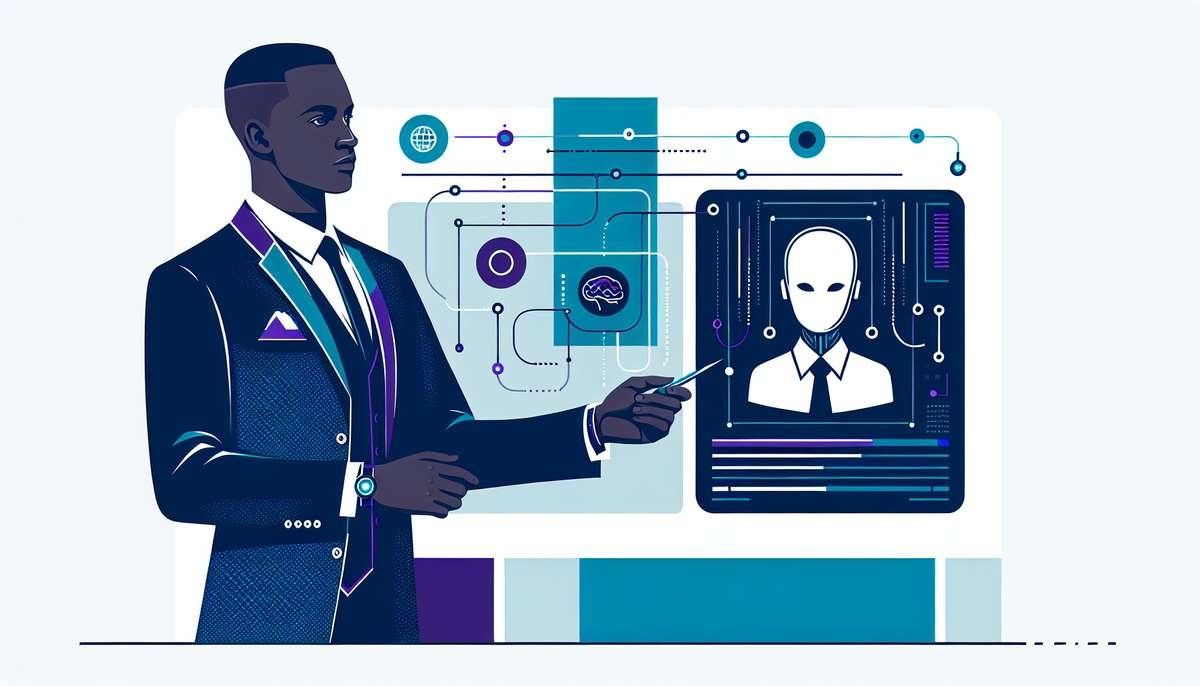
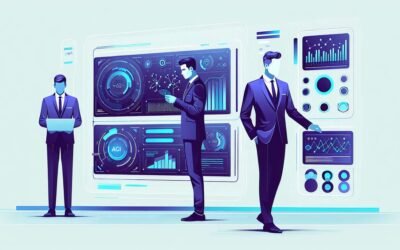
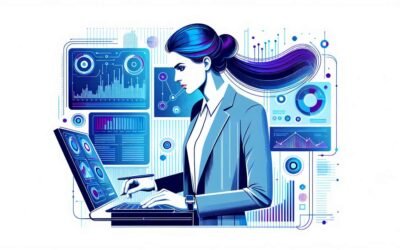
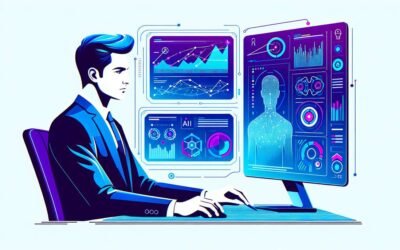
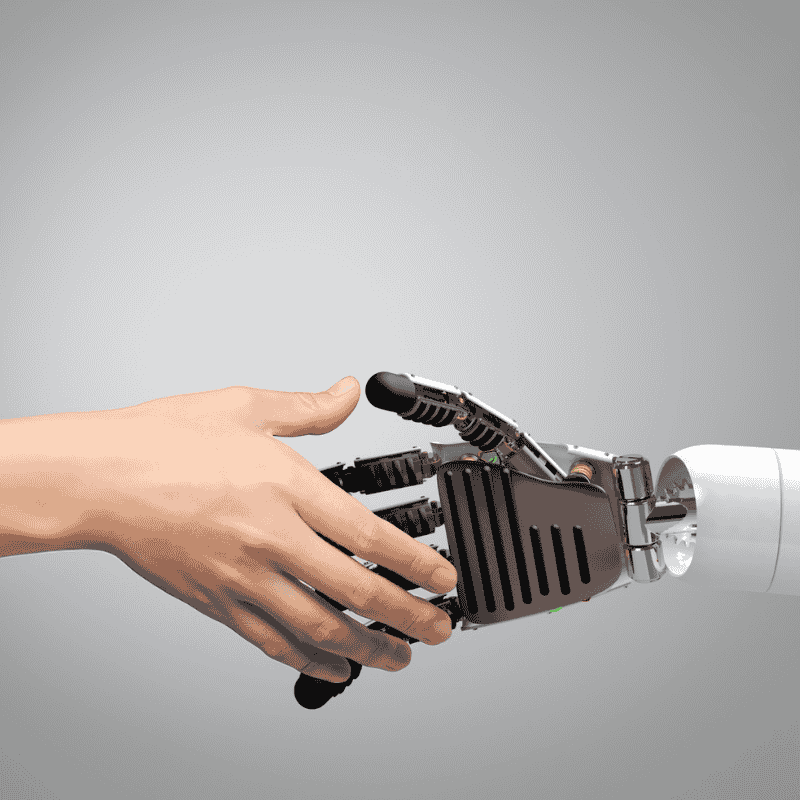
0 Comments